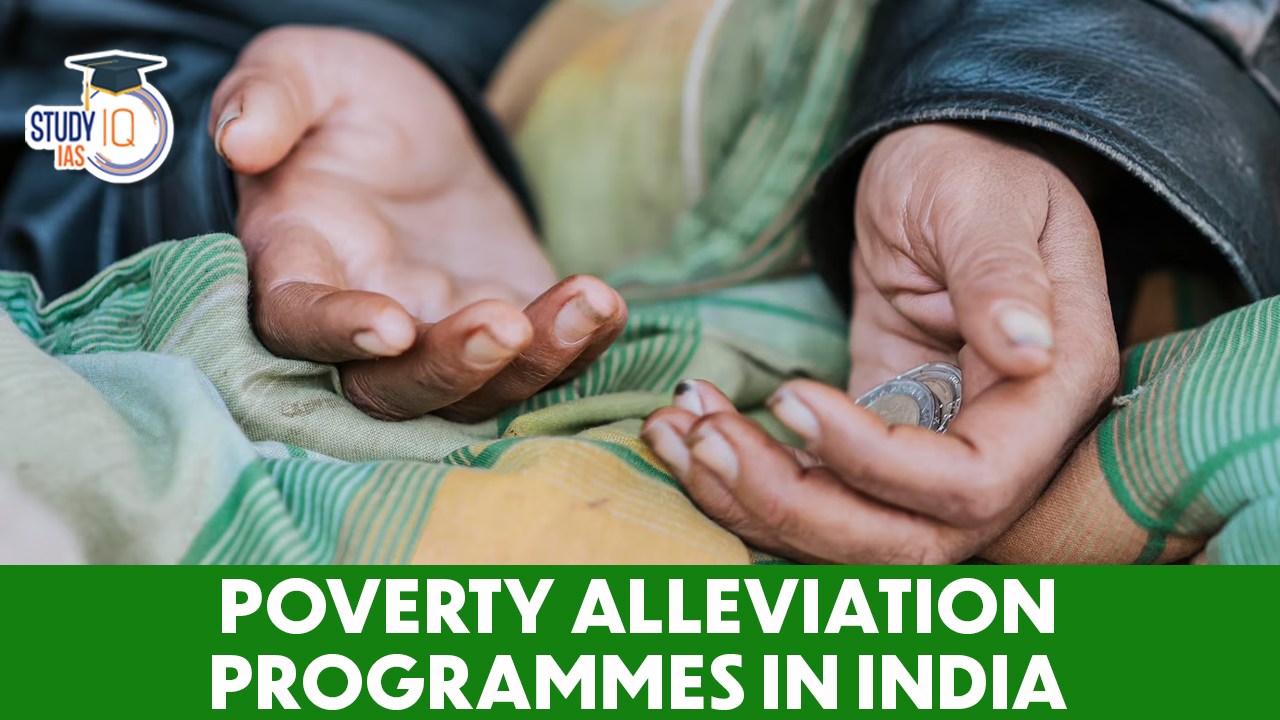
Poverty Alleviation Programmes in India aims to reduce the rate of poverty in the country by providing proper access to food, monetary help, and basic essentials to eradicate poverty.
Published On August 17th, 2023

Table of Contents
Poverty Alleviation Programmes in India: The Poverty Alleviation Programmes in India aim to reduce the prevalence of poverty in the country by providing enough access to food, financial aid, and basic necessities to families and households that fall below the poverty line. There are many facets to poverty, but it is undeniably a lack of wellbeing. Poverty is exemplified by low wages and the inability to obtain the essential goods and services needed for human subsistence. Low levels of education and health, restricted access to sanitary facilities, lack of speech, a lack of finances, inadequate physical security, and opportunities to improve one’s status are all made possible by the Indian government’s poverty alleviation programmes.
India’s initiatives aim to alleviate poverty The Indian economy syllabus for the IAS exam must be studied using the UPSC notes. You can discover all the government’s programmes for eradicating poverty in the sections that follow this page.
Poverty Alleviation Programmes are the kinds of initiatives that a government launches to end the country’s ongoing poverty. A nation’s poverty alleviation programmes can be divided into two categories: those that are targeted towards rural residents or areas, and those that are directed towards urban residents or places.
However, the majority of the government-initiated programmes and projects are created with the rural sector of society in mind. This is due to the fact that rural areas have a considerably higher frequency of poverty than metropolitan ones. Find out what makes urban and rural places different here.
Poverty is defined as the lack of the means and necessities necessary to maintain a basic quality of existence. A person is considered to be living in poverty when his or her earnings are insufficient to pay for the necessities of life. The World Bank defines poverty as a substantial loss of wellbeing that can take many different forms. Low salaries and a lack of access to the commodities and services required for a reasonable standard of living are two characteristics that define poverty.
Poverty alleviation refers to a collection of social and economic initiatives taken to eradicate poverty in a society. Extreme poverty is defined by the World Bank as having a daily income of less than $1.90, which affects more than 760 million people worldwide. In 2011, almost 268 million Indians made it on less than $1.90. The Indian government has developed a number of plans, projects, and schemes under various poverty alleviation programmes in India in order to eradicate poverty and provide disadvantaged households with access to the basic necessities.
Numerous schemes for reducing poverty have been implemented in India since 1978, helping the less fortunate members of society raise their level of living through a variety of techniques. The table below lists all of the government of India’s initiatives to reduce poverty, along with the year they were introduced and their goals.
Only until the impoverished start to actively participate in and contribute to the growing process will poverty be successfully erased. This is achieved through a process of social mobilisation that empowers and encourages disadvantaged people to participate. Additionally, this will help to open up career prospects, which could lead to an improvement in income, skill development, health, and literacy. Additionally, infrastructure including schools, roads, power, telecom, IT services, and training facilities must be supplied in poverty-stricken communities.